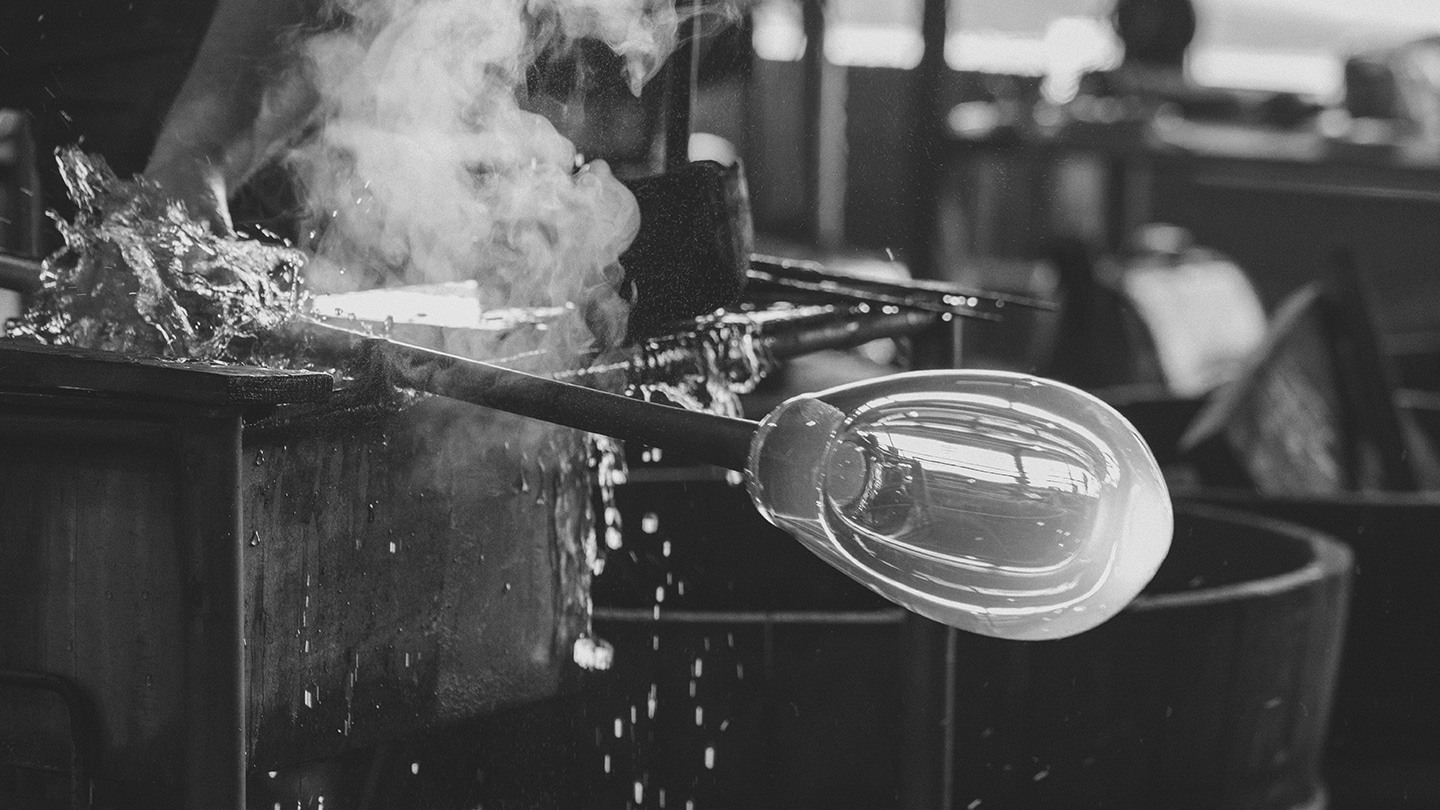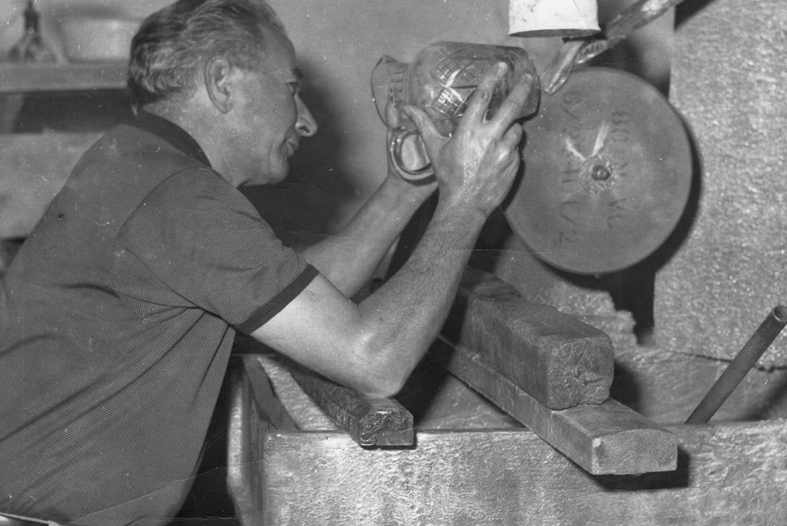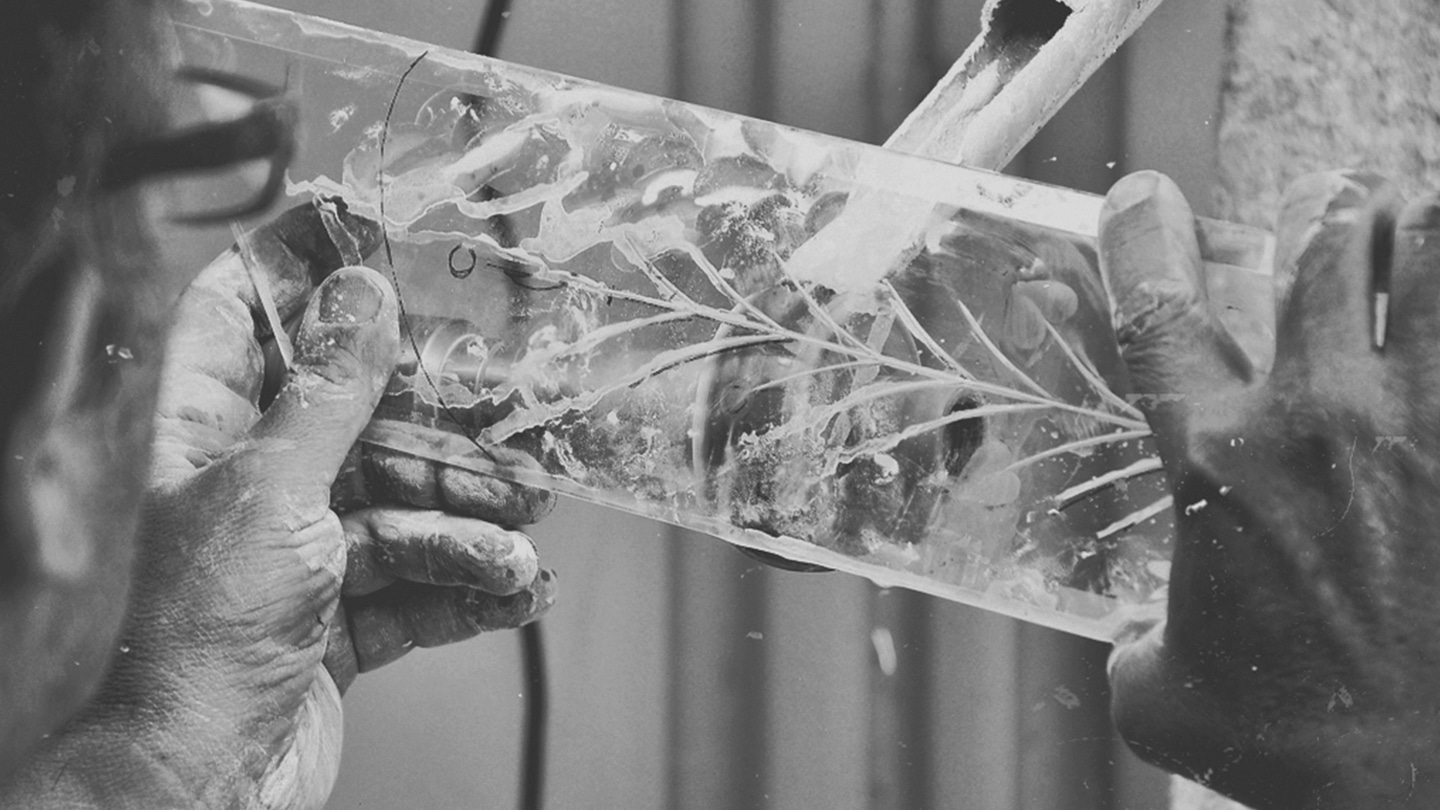The element of Venetian glass is essentially silicon dioxide used as glassmaking agent and silica – or sand, although in the past powdered quartz pebbles were used instead – as melting agent. The latter was once obtained using costal plants’ ashes and today thanks to sodium carbonate or potassium carbonate.
Calcium is also used as stabiliser together with additional minerals aimed at colour, decolour, opacify and refine, and other materials that give specific qualities to glass. All these elements are carefully weighed in a composition room.

Master glassblowers wake up at 3 o’clock in the morning to make the colour checks, namely they create prototypes of the glass colour they wish to obtain. Once solidified, they break them and check that the broken parts are identical.

“Glass is ever authentic because it’s not perfect. And only being imperfect can it reach perfection. It’s like a beautiful woman… when you think you know her you hunderstand you never knew nothing at all”.
—Paolo Crepax
There are various techniques to work glass such as the “filigree” blown glass (filigrana) and the hot-worked mosaic glass (murrina) obtained using bits of coloured glass. When these bits are red and black the glass paste is called avventurina. Another technique is “incalmo” and Paolo Crepax is its supreme master.
“Incalmo” consists in the welding of two hot pieces of blown glass that have to fit together through their open sides and along their two edges of equal circumference in order to have a single object composed of two colours and/or two differently worked parts. As final step, glass is brought down to 600° C and finally to room-temperature. The time required to completely cool off depends on the thickness of the glass.


